Bonnie Raitt – “A Force To Be Reckoned With”
“There are two types of men in this world: those who are in love with Bonnie Raitt, and those who’ve never heard of her”
Willie Nelson
I must confess I’m one of the former.
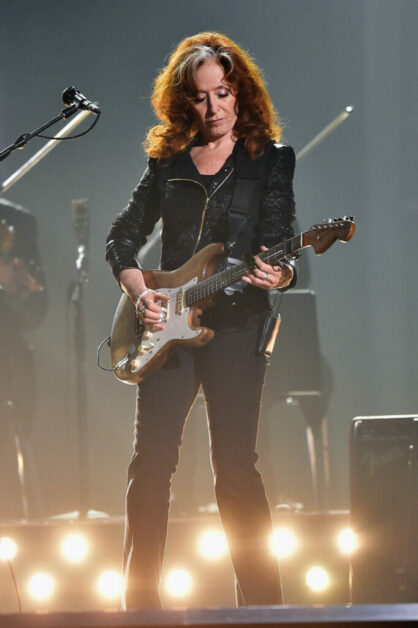
I remember the first time I saw Bonnie Raitt.

It was at Buffalo State Teacher’s College – in the cafeteria (?) – in 1973. Bonnie was topping a triple bill that included, (the then unknown), Leon Redbone, and, the relatively little known band, Orleans. I also remember that it was with great anticipation because I had been listening repeatedly to – and was really taken by – her first two albums: Bonnie Raitt and Give It Up.
After fine sets by Redbone and Orleans, Bonnie strolled onstage accompanied only by her bass player, Freebo.
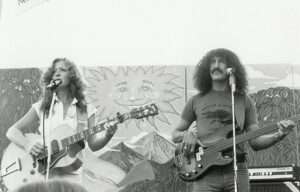
A feeling good Raitt – extolling the merits of wine – proceeded to tell the audience that she wasn’t going to follow a set list as such. Instead, she would take requests from the audience. I don’t remember many of the selections outside of her standout version of “Bluebird” (introduced as “written by that Delta Bluesman Stephen Stills”), a fun and rollicking “Satisfaction”, and the personal highlight of the show: a killer take on Aretha’s “Since You’ve Been Gone”.
That performance gave one the sense that Bonnie Raitt was, indeed, a force to be reckoned with – an artist that displayed a confidence in her ability and was in total control of her environment.
I’ve seen her live several times over the years, and she always reinforced that initial perception. Raitt has continued to impress with her high level of musicianship that has continued to evolve over the years.
Bonnie Raitt has been on the scene for over 50 years and has quietly carved out an outstanding career – both inspired and, given the longevity and depth, inspiring as well. The term “quietly” is used here because Raitt has done it with relatively little fanfare. For instance, I would venture to guess that a significant number of music buffs that pride themselves in such matters might be surprised to learn that Bonnie Raitt has:
- won 13 Grammy Awards (among 30 nominations) including a Lifetime Achievement Award
- sold 20 million albums (including a “Lucky 7” of 3 Platinum and 4 Gold Records**)
- Including her latest Just Like That, released 20 albums to date (not including “Greatest Hits” packages)
** The “Lucky 7”:
· Luck Of The Draw (1991) Platinum, 7.4 million sales (includes “Something To Think About”)
· Nick Of Time (1989) Platinum, 5.3 million sales (includes “Thing Called Love”)
· Longing In Their Hearts (1994) Platinum, 2.1 million sales (includes “Love Sneaking Up On You”)
· Fundamental (1998) Gold, 550,000 sales (Includes “Lovers Will”)
· Sweet Forgiveness (1977) Gold, 500,000 sales (Includes “Runaway”)
· Silver Lining (2002) Gold, 500,000 sales (Includes “Gnawin’ On It”)
· Give It Up (1972) Gold, 500,000 sales (Includes “Love Me Like A Man”)
Raitt’s albums generally sell moderately, and with the exception of her two (surprising) Grammy winners Nick Of Time (1990) and Just Like That (2023) Bonnie hasn’t really enjoyed a commensurate amount of mainstream notoriety.
What Raitt has done is successfully cultivate a devoted and loyal fan base founded primarily on outstanding live performances. And that fan base along with her peers and critics recognize her immense talent and salute her achievements both on stage and off.
(While stating the above, (and the obvious), it’s acknowledged that Bonnie Raitt’s story continues to be written. And, it’s noted, that the 1990 Grammy success of Nick Of Time provided significant traction; and ignited a successful, well deserved career that has reached heights that might not even been imagined up until that point).
Bonnie Rait has had two distinct careers. The first was one built on a cult following fuelled by her aforementioned captivating live work and her first 3 records.
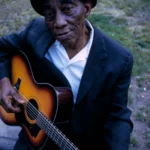

An apt representation of Bonnie’s bonafides is her first release, Bonnie Raitt. The album is a fully realized effort of an advanced 21 year old, that helped shape Roots / Americana. It featured a Folk / Blues – Soul amalgam of timeless American music. No doubt she was aided by, (and leaned on), her personal relationships with Blues icons like Mississippi John Hurt, Mississippi Fred McDowell, Lightnin’ Hopkins, and Sippie Wallace among others. (Bonnie was able to meet, interact, and take both personal and performance related mental notes of her heroes through her association with Blues historian, promoter, and manager Dick Waterman).
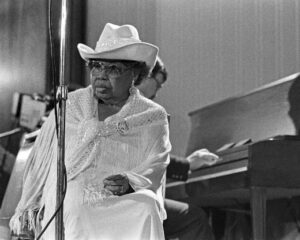
Those relationships provided immediate results with the release of her first record and the spirit therein permeates all that Raitt has touched since, including works that dominate her successful “second” career. That career followed a fallow period – roughly 1982 through 1986 – when, as she has remarked, Roots musicians like herself, couldn’t catch a break. That is, their work didn’t resonate with music buyers that were more inclined, at the time, to support the likes of The Pet Shop Boys, Michael Jackson, Survivor, and Madonna among others.
The same period is personally defined by Bonnie as a time when she took stock of her life.
In so doing, Bonnie decided to, and was successful in, altering her lifestyle for a healthier one. Specifically, Raitt gave up alcohol and drugs, and started working out. When discussing this change Raitt stated that the hard living lifestyle that she embraced was one learned from the Blues singers that she came to know, and admire. At the same time, she held the belief that the same lifestyle added to her credibility as a musician in general, and Blues singer in particular.
In addition, she went on to say that she credited one of her guitar heroes – Stevie Ray Vaughan – who cleaned up, (and became an even better musician as a result), serving as motivation to embark on a sober lifestyle. Another (lesser) factor that played a role was a pending agreement to a project with Prince that included a video; (that incidentally didn’t come to fruition). Self conscious about her weight, Raitt immediately stopped drinking and joined AA.
That aspect of her life might have changed but what remained the same was Bonnie’s continued determination to make great music; and develop as a musician, songwriter, and band leader.
All of those qualities were evident with the release of the multi million selling Nick Of Time that opened the floodgates to a highly successful subsequent part of her career. (Incidentally, Bonnie would often refer to Nick Of Time as “My first sober album”).
For Bonnie Raitt it all started at home in L.A. Bonnie along with her two brothers (Bonnie is a middle child) is the product of a creative, arts respectful home environment.
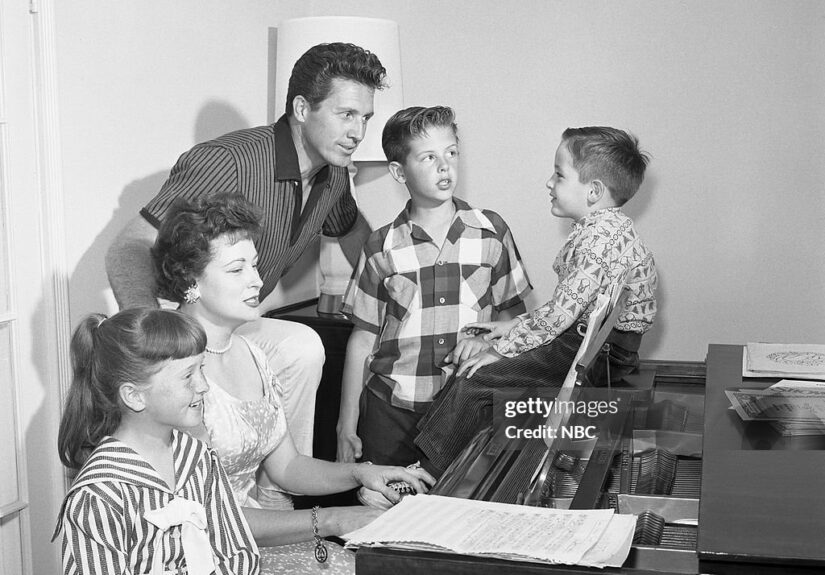
Her father, John Raitt, a highly successful Broadway stage actor and singer; and her mother, Marjorie Haydock, an accomplished pianist, encouraged their children to pursue music. In addition, Bonnie and her brothers were raised in a household climate that supported Quaker traditions as well as one that valued social activism.
This obligation to social activism in her formative years presaged what was to unfold in Bonnie’s adult endeavours. That is, to date Raitt supports no less than 50 charities, foundations, and causes. Included in these many socio political and music endeavours are MusiCares and The Rhythm & Blues Foundation that Raitt co-founded. (MusiCares is an organization devoted to providing assistance to those in the music business in times of need. The Rhythm & Blues Foundation’s mandate is that of addressing wrongs perpetrated on artists that may not have been business minded enough to protect their rights – e.g. songwriting royalties).
Raitt has stated that her politically aware bent is intertwined with her music and career this way: “I’ve been political since I was a little kid. Civil rights and the peace movement are just as much a reason that I picked up a guitar.
And the reason I like blues so much is probably that I grew up thinking we owed a tremendous debt musically and culturally to Black people. And I was absolutely horrified that our country murdered Indians and enslaved Black people. The political arm was in keeping with the more folky side of me.”
The “folky side of me” is in reference to her interest in the Folk music revival of the 50’s and its related causes. Although Raitt listened to the popular music of the day, it was Folk that first caught her imagination. Musically, it provided an opportunity for Raitt – who got her first guitar as a Christmas present when she was 8 years old – to learn to sing and play, and learn the somewhat straightforward, (in structure), songs. (Incidentally, Bonnie also learned how to play piano but chose guitar because in part she was somewhat intimidated by her mother’s advanced skills on the instrument: “I’d never be as good on piano as my mother”.)
While Folk and the associated lifestyle continued to hold Bonnie’s interest, her exposure at 14 to the album Blues At Newport 1963, stirred a new interest – Blues.
The record contained moving performances by a who’s who of Country / Folk Blues including Sonny Terry and Brownie McGhee, Mississippi John Hurt, John Hammond, Reverend Gary Davis, John Lee Hooker, and Dave Van Ronk.
In addition to being enraptured by the music, Bonnie was drawn to John Hammond’s slide guitar. It was her first real exposure to slide and Hammond would prove to be an early mentor. That being said, Bonnie looked up to other slide players including Muddy Waters, and probably her greatest influence, Mississippi Fred McDowell.
McDowell, who Bonnie met in the 60’s, and whose music married Blues and Gospel, befriended Raitt and taught her the finer points of slide guitar. (It should be noted, that later on, Lowell George provided Bonnie the final touch, and helped her shape / complete her unique sound by introducing her to a compressor pedal. The pedal upped the ante, allowing Bonnie to add sustain thereby leaving her lines to dance in the air)
It was also in the 60’s that Raitt moved East to Cambridge Massachusetts attracted to the established Folk scene there as well as the intellectual environment and aligned social justice causes.
There she attended Radcliffe College, the female counterpart of the all-male Harvard College. Majoring in Social Relations and African Studies, Bonnie recalled that she loved being a student. At the same time, Raitt stimulated her interest in Folk-and Country Blues by playing local coffee houses where she proved herself to be a natural performer. Word started getting around about this young woman who sang the Blues and played slide guitar convincingly. Some found a woman playing slide guitar to be novel, although Bonnie herself didn’t view a woman playing slide as unique.
Despite Raitt’s interest in her studies she didn’t remain in school long enough to get her degree.
Bonnie had another calling. Instead, she left after 3 years, and turned her attention to music full time. What that meant was expanding her performance horizons to include NYCs’ Village playing clubs such as The Gaslight, and hanging and playing with her aforementioned heroes. Raitt added to her integrity by being accepted by and opening for the likes of Mississippi John. Hurt, Son House, Muddy Waters, and John Lee Hooker among others. (Bonnie did so with her parents’ approval despite their apprehension of Bonnie keeping company with people years her senior, who’s daily first order of business included a shot of whiskey at ten o’clock in the morning).
Raitt started her career as a Blues musician – as evidenced by her self titled debut album that featured songs such as Robert Johnson’s “Walking Blues” and Tommy Johnson’s “Big Road”.
But, as early as her second album, Bonnie started incorporating other stylistic forms, and interpreting the works of contemporary songwriters. As her career rolled on, those songwriters have included Jackson Browne, Joni Mitchell, John Prine, and John Hiatt among others.
Bonnie also kept things fresh by working with a number of different producers = 13 of them – along the way that ranged from R&B veteran Jerry Ragavoy through to alternative producers Mitchell Froom and Tchad Blake. It also bears mentioning that, displaying a similar mindset, Raitt hasn’t been shy about tackling material that would appear to be outside her musical sphere such as Talking Heads’ “Burning Down The House”.
Amidst the seeming whirling dervish of change, is one constant that Raitt has maintained in the studio.
That is, her insistence of playing live, and utilizing her road band. Guest musicians and overdubs were welcomed but the starting point – the bones of the song = had to be played live in the studio. This tact stands as an extension of Raitt’s love of playing live and interacting with her musicians of choice.
In the same vein, Raitt has commented on her recording / performing formula of taking one year to create an album and two years touring in support of that same album. While she remains excited with the creative process of shaping and making an album, Bonnie enjoys the live experience and bringing the new material to her valued fans even more so.
Further, as in the case of her causes, Raitt feels a certain responsibility to her fans.
Accordingly, she doesn’t want to disappoint those same fans by not playing songs that they came to hear and that have come to be associated with a Bonnie Raitt performance. So, she continues to play selections such as “Angel From Montgomery”, “I Can’t Make You Love Me”, and “Something To Talk About”. Rather than viewing them as a burden she welcomes fans’ appreciation while looking to add new nuances every time she plays them.
Bonnie Raitt has enjoyed a long and outstanding career.
Along the way she has earned universal respect. In forging that career she has become a role model and has set a standard that – given the continual challenges that the music business puts before them – few contemporaries have the time or inclination to match.
Following is a playlist that encompasses Bonnie’s albums and hopefully, demonstrates the growth and sheer talent of Bonnie Raitt. A true star in every sense of the word.

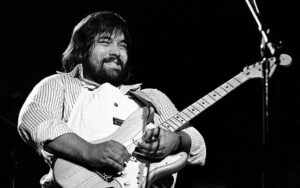
Excellent overview of Raitt’s career, and the recognition of the uniqueness of her progress as a female musician. She is one of the trailblazers that encouraged many other women in blues, folk, country and bluegrass. Thanks Rico.